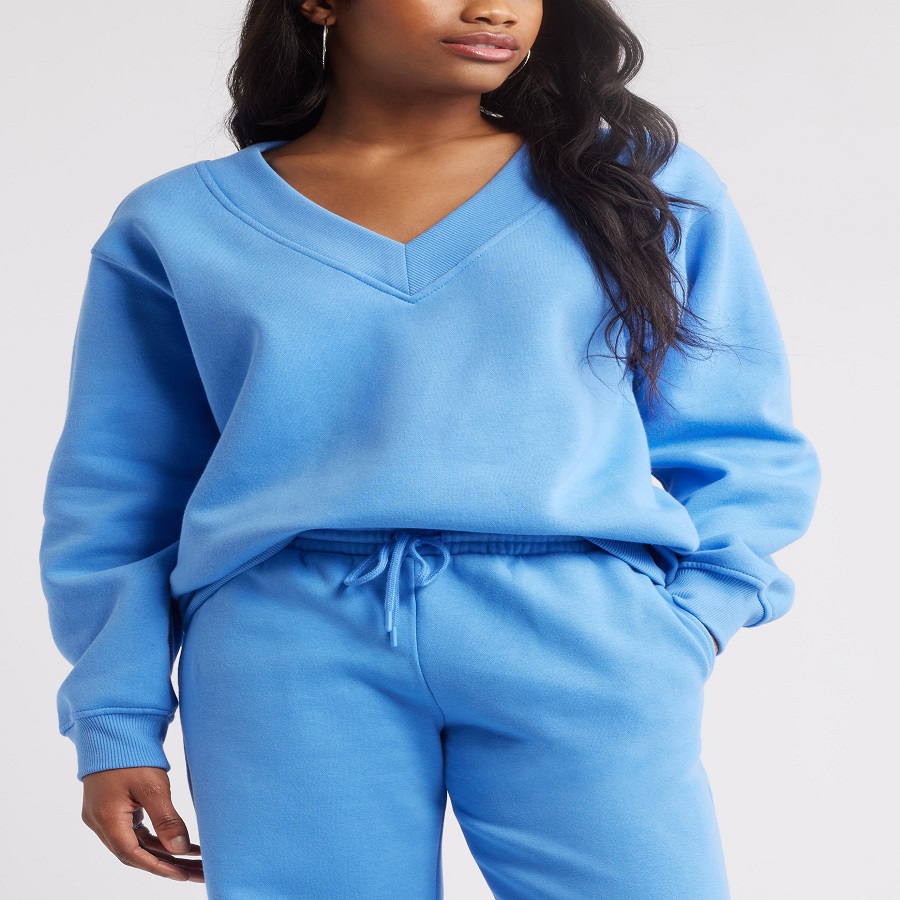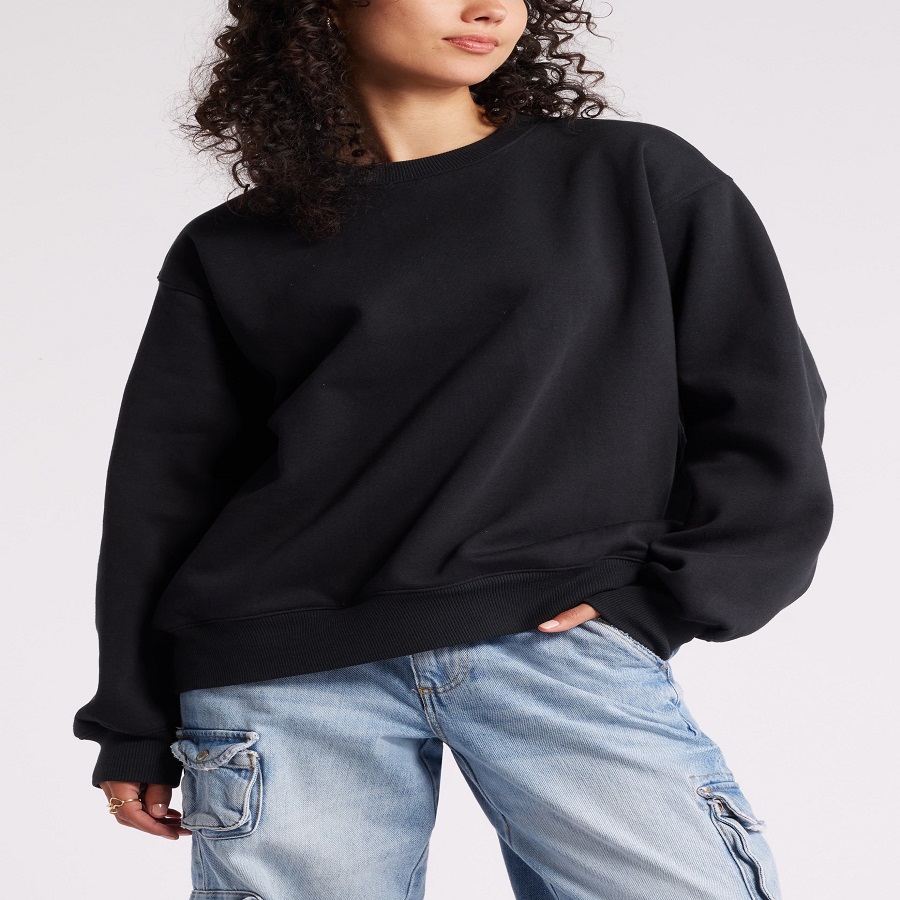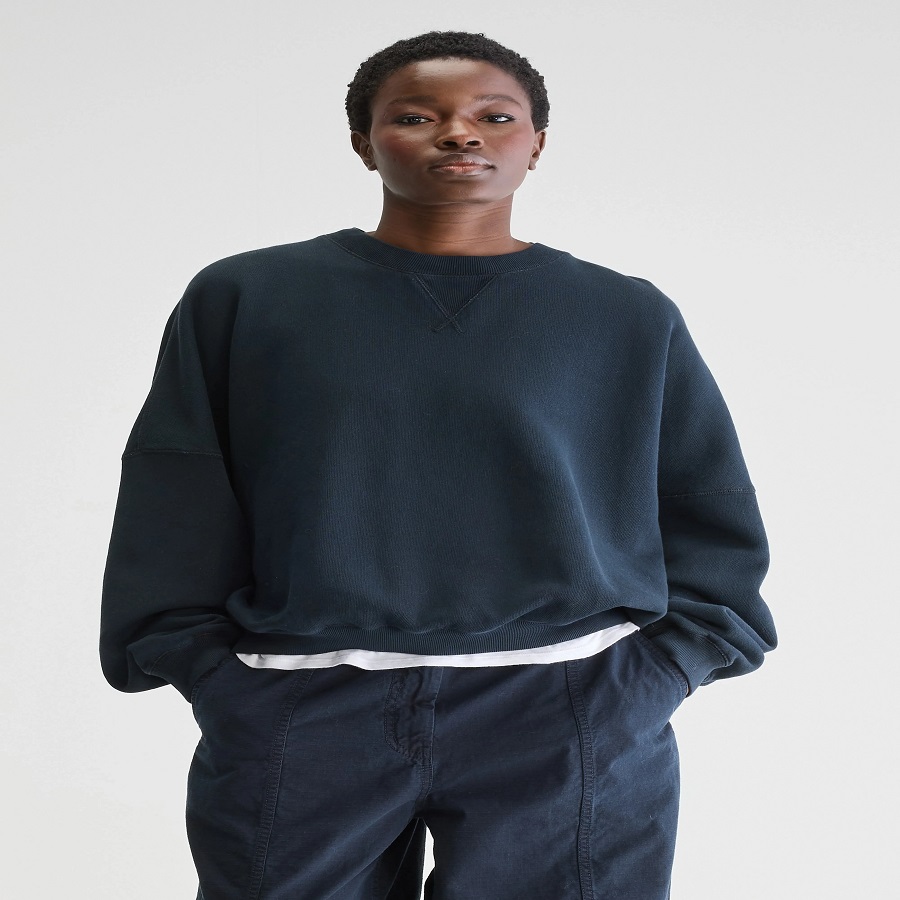The Rise of Eco-Friendly Materials in Fashion
In recent years, fashion has taken a turn towards sustainability. Consumers now seek eco-friendly options like fleece sweatshirts made of biodegradable and recycled materials. They demand fashion that respects the planet. This shift has sparked an increase in the use of sustainable fabrics in the industry.
One key player in this green movement is the fleece sweatshirt. It is a staple in casual wear. Its popularity has encouraged brands to explore eco-friendly materials. They innovate to reduce environmental impact. These materials include organic cotton, recycled polyester, and Tencel. They are soft, durable, and have a lower carbon footprint compared to traditional materials.
The eco-friendly approach is not just about the materials themselves. It involves the entire production process. Designers and manufacturers are adopting practices that conserve water, reduce waste, and lower energy use. They aim to create a complete, sustainable life cycle for fleece sweatshirts.
Consumers are becoming more informed. They now understand the impact of their fashion choices on the environment. As they lean towards sustainability, brands must adapt or risk falling out of favor. The rise of eco-friendly materials in fashion signifies a new era. An era where style and sustainability go hand in hand. This is a positive step for the future of fashion and for our planet.
 Key Features of Sustainable Fleece Sweatshirts
Key Features of Sustainable Fleece Sweatshirts
Sustainable fleece sweatshirts stand out for several reasons. They are more than just trendy items. These sweatshirts showcase how fashion can be both stylish and kind to the environment. Here are the key features that make them a sustainable choice:
- Eco-Friendly Materials: The cornerstone of sustainable fleece sweatshirts is the use of materials with a low environmental impact. Organic cotton, for instance, forgoes pesticides and chemicals, making it safer for the planet. Recycled polyester, another popular choice, gives a second life to plastic bottles.
- Reduced Water Usage: These sweatshirts are produced with a minimal use of water. This is crucial, as the fashion industry is one of the largest water consumers globally.
- Energy Efficiency: Sustainable manufacturing processes often involve renewable energy sources. This reduces carbon emissions and energy consumption in the production of fleece sweatshirts.
- Biodegradability: Many eco-friendly fleece materials are biodegradable. They break down more easily without harming the environment once discarded.
- Durability: The strength and longevity of materials used ensure that these sweatshirts last longer. This reduces waste and the need for frequent replacements.
- Low Carbon Footprint: From raw material to final product, these fleece sweatshirts have a reduced carbon footprint. This means less contribution to global warming.
- Ethical Production: Often, brands producing sustainable fleece sweatshirts also follow ethical labor practices. This includes fair wages and safe working conditions for workers.
These features highlight the multifaceted approach to sustainability in fashion. They prove that eco-friendly fleece sweatshirts offer a responsible choice without sacrificing comfort or style. By prioritizing these key attributes, fashion brands meet the growing consumer demand for sustainable apparel. And consumers can enjoy their fleece sweatshirts knowing they support environmental conservation.
Popular Eco-Friendly Fabrics for Fleece Sweatshirts
Eco-conscious shoppers often seek fleece sweatshirts made from sustainable textiles. These fabrics are kinder to the planet and have less impact on the environment. Let’s dive into the types of materials that are shaping the green future of casual wear.
- Organic Cotton: Grown without harmful chemicals, organic cotton is a go-to for green fleece sweatshirts. It’s gentle on Earth and cozy for wearers.
- Recycled Polyester: Made from reclaimed plastic, recycled polyester turns waste into warm fleece apparel. It helps reduce plastic pollution drastically.
- Tencel: This fabric comes from sustainably harvested wood pulp. It’s soft, breathable, and biodegradable, making it an excellent choice for eco-friendly fleece.
- Bamboo Viscose: Bamboo grows rapidly with little water. Its fibers create soft, breathable, and hypoallergenic fleece sweatshirts.
- Hemp: Tough and fast-growing, hemp requires no pesticides. Hemp fleece is durable and has a lower environmental impact.
These popular fabrics not only contribute to sustainability but also offer high comfort and lasting wear. They cater to the needs of eco-aware customers and help brands stay in line with sustainable trends. As the demand grows, we can expect to see more innovation in eco-friendly fabrics for fleece sweatshirts.
Innovations in Sustainable Sweatshirt Manufacturing
In the quest for more eco-friendly apparel, particularly focusing on fleece sweatshirts, innovative manufacturing techniques are key. Advancements in this sector aim to further reduce environmental impact while maintaining high-quality products. Here’s how innovation is shaping the future of sustainable sweatshirt manufacturing:
- Low-Impact Dyes and Inks: Manufacturers are now using water-based, low-impact dyes and inks that are less toxic and require less water for both dying and rinsing processes.
- 3D and Digital Prototyping: Reducing waste even before production, designers are turning to 3D software to create digital prototypes, minimizing the need for physical samples.
- Closed-Loop Systems: Some manufacturers have introduced closed-loop systems where all water and materials used in production are recycled and reused within the factory.
- Energy-Efficient Machinery: Advanced machinery that conserves energy is being created for sustainable sweatshirt production, decreasing the overall carbon footprint.
- Automation and AI: To optimize processes and reduce waste, manufacturers are implementing automation, complemented by AI, to enhance precision and efficiency.
These innovations not only contribute to a greener planet but also pave the way for the fleece sweatshirt to remain a staple in sustainable fashion. With the integration of these advanced techniques, manufacturers can deliver eco-friendly products that resonate with environmentally conscious consumers. The industry’s commitment to innovation assures us that sustainable manufacturing will continue to evolve and improve, driving forward the eco-friendly movement in fashion.
The Impact of Consumer Demand on Eco-Friendly Trends
Consumer demand has become a powerful force in shaping eco-friendly trends, particularly in the realm of fleece sweatshirts. Here are the ways in which consumer behavior is driving the trend towards more sustainable fashion choices:
- Increased Awareness: People are more aware of the environmental impacts of their purchases. They are seeking fleece sweatshirts that align with their eco-conscious values.
- Preference for Sustainability: Shoppers are opting for items with lower environmental footprints. This shift in preferences is pushing brands to focus on eco-friendly materials.
- Willingness to Pay More: Consumers demonstrate a readiness to invest in higher-priced, sustainable options. They understand that quality and eco-friendliness often come at a higher cost.
- Demand for Transparency: Buyers want to know where and how their fleece sweatshirts are made. They favor brands that are open about their manufacturing processes.
- Influence Through Social Media: Social networks have amplified voices advocating for sustainable fashion. Users encourage each other to support eco-friendly fleece sweatshirt brands.
- Support for Ethical Practices: There is a growing insistence on ethical labor conditions. Eco-aware consumers expect brands to treat their employees fairly, alongside being environmentally responsible.
These consumer behaviors are inducing significant changes within the fashion industry. Brands are actively enhancing their eco-friendly strategies to keep up with the expectations of their customers. This symbiotic relationship is pivotal for the continuous innovation and adoption of sustainable practices, making eco-friendly fleece sweatshirts a mainstream choice in fashion.
How Brands are Responding to the Eco-Friendly Movement
Brands are quickly adjusting to the eco-friendly movement, impacting fleece sweatshirt production in several ways.
- Eco-Conscious Collections: Many brands now offer specific lines of eco-friendly fleece sweatshirts. They use sustainable fabrics and ethical practices to meet demand.
- Transparency in Manufacturing: To build trust, brands are sharing more about their production process. They disclose where materials come from and how items are made.
- Corporate Responsibility Programs: Companies implement programs to reduce environmental impact. They set goals for lower emissions and less waste.
- Collaboration with Environmental Organizations: Some brands partner with organizations to support environmental causes. They contribute a portion of fleece sweatshirt sales to sustainability efforts.
- Recycle and Upcycle Initiatives: Brands encourage customers to recycle old sweatshirts. They also create new products from upcycled materials.
- Innovative Designs for Longevity: Designers focus on making fleece sweatshirts timeless. Long-lasting designs reduce the need for frequent replacement and waste.
As a result, brands are not only adapting to trends but also influencing them. They are becoming leaders in the eco-friendly movement, proving that fashion can be both stylish and sustainable.
The Role of Technology in Eco-Friendly Fleece Production
Technology plays a vital part in making fleece sweatshirt production greener. Here are key tech advances driving eco-friendly production:
- Advanced Textile Machinery: New machines weave and knit fabrics more efficiently. They use less energy and produce less waste.
- Waterless Dyeing Technology: Cutting-edge methods dye fabrics without using much water. This helps conserve one of Earth’s precious resources.
- Laser and Ozone Finishing: These technologies reduce the need for chemicals in finishing. A fleece sweatshirt’s soft feel can now come from a cleaner process.
- Blockchain for Traceability: Blockchain tracks the journey of sustainable materials. Consumers can see the eco-friendly path of their fleece sweatshirt.
- 3D Printing: On-demand 3D printing of designs reduces excess production. It also cuts down on waste and materials.
- Renewable Energy Usage: Solar and wind power are increasingly powering production. This switch cuts greenhouse gas emissions significantly.
The integration of these technologies ensures that fleece sweatshirts are produced with minimal harm to the environment. It adds value for both brands and consumers who care about sustainability. By investing in these technologies, the fashion industry is taking a step forward in eco-friendly production.
Ethical Considerations and Certifications in Sustainable Fashion
Sustainable fashion is not just about using eco-friendly materials like in fleece sweatshirts. It also includes ethical practices and certifications that assure consumers of a brand’s commitment to both the planet and its people. Here are some ethical considerations and certifications that are gaining importance in sustainable fashion:
- Fair Labor Practices: Ethical fashion demands fair wages and safe working conditions for all workers involved in making fleece sweatshirts.
- Child Labor Avoidance: It’s crucial that brands ensure their products are free from child labor at any stage of production.
- Animal Welfare: For those brands using animal-derived materials, humane treatment of animals is a key ethical concern.
- Certifications to Look For: Various certifications help consumers identify truly sustainable products. These include the Global Organic Textile Standard (GOTS) for organic materials, the Fair Wear Foundation for worker welfare, and the Bluesign certification for environmentally safe production processes.
These ethical considerations align with the increasing demand for transparency in the fashion industry. Brands that achieve and showcase certifications boost consumer trust and position themselves as leaders in eco-friendly fashion. For fleece sweatshirt producers and fashion brands, adherence to these ethics is as important as the sustainable materials they use. Together, they drive the industry towards a more responsible future, where fashion is kinder to the environment and to society.

